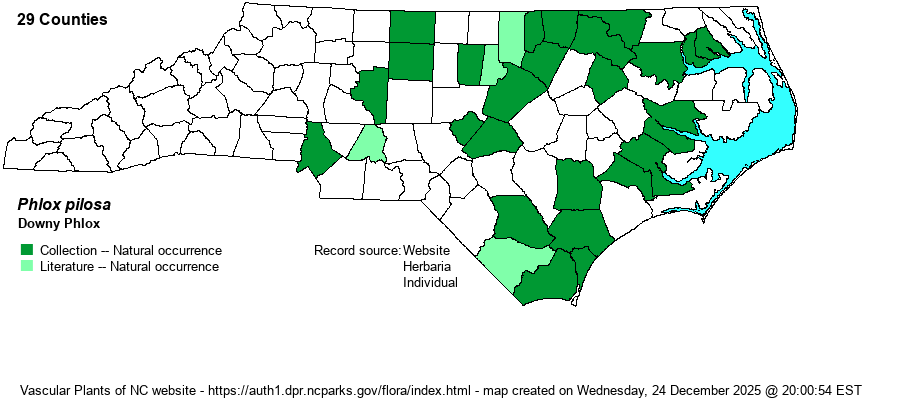| Author | L. | |
| Distribution | Scattered over most of the Coastal Plain, and into the eastern half of the Piedmont; ranges west to Rockingham, Davidson, and Mecklenburg counties. Presumably absent in the extreme northeastern Coastal Plain.
This is a very widespread species in the Midwest and Great Plains, but is much less numerous in the East. Ranges from NJ and ND south to central FL and most of TX. It tends to be absent in the Appalachians.
| |
| Abundance | Uncommon to locally infrequent in the Coastal Plain and in the northeastern Piedmont (west to Granville and Wake counties). Rare elsewhere in the Piedmont range, including the Sandhills region of the Coastal Plain. Most numerous or widespread in VA border counties from Northampton to Granville. | |
| Habitat | This is a species of rather dry to mesic soil, though generally not in pine/scrub oak sandhills. It favors partial shade, and is most often seen along wooded borders, openings in upland woods, and on roadbanks. | |
| Phenology | Blooms in April and May, and fruits in May and June. | |
| Identification | This is a standard-looking Phlox, with an erect stem to about 1-1.5 feet tall. It has only about 6-12 nodes below the flower cluster, and the opposite leaves are narrowly lanceolate, to nearly linear, averaging 2-3 inches long but only 1/5-inch wide, and the tip is quite narrowed and stiff. The inflorescence at the top of the stem is mostly a few cymes in an open cluster, not dense as in some species; it normally is noticeably wider than tall. The flowers are mainly pink, less often bright rose, and similar to others with a long tube and 5 spreading lobes. The species is quite hairy on the corolla tube, which distinguishes it from P. divaricata, which has smooth corolla tubes and has lavender-blue flowers. P. ovata has much wider leaves, and other species have many more nodes of leaves and usually wider leaves, and do not grow in the range of the species. This is a species that biologists in the eastern half of the state may be familiar with, as the species can be seen in spring by driving back roads in parts of this area, and looking for pink flowers along wooded borders. | |
| Taxonomic Comments | Weakley (2018) lists subspecies for it, with the nominate one -- ssp. pilosa occurring in the state.
| |
| Other Common Name(s) | Prairie Phlox | |
| State Rank | S3? [S3] | |
| Global Rank | G5 | |
| State Status | | |
| US Status | | |
| USACE-agcp | FACU link |
| USACE-emp | FACU link |

